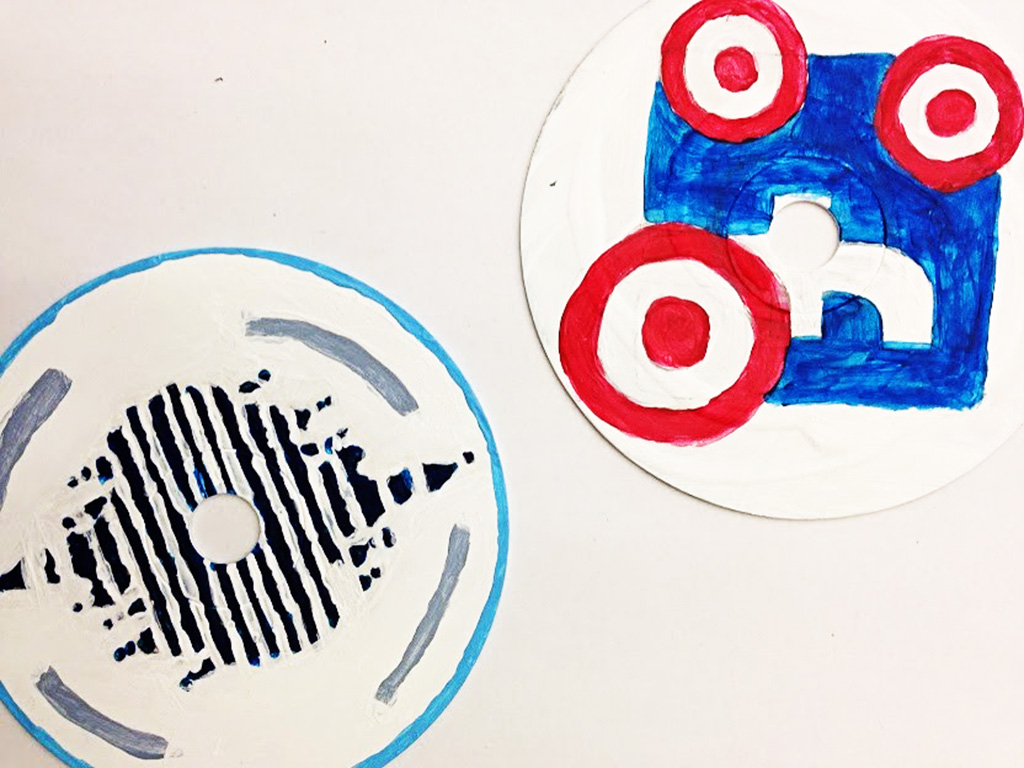
In The Taft Golden Record Project, student artists engage teachers, family members, and other students by putting out a call for sounds, images, objects, or statements that represent a contemporary view of humanity. The collected items serve both as research and as materials for the project. This installation project includes a participatory element that invites viewers to contribute or respond to the work.
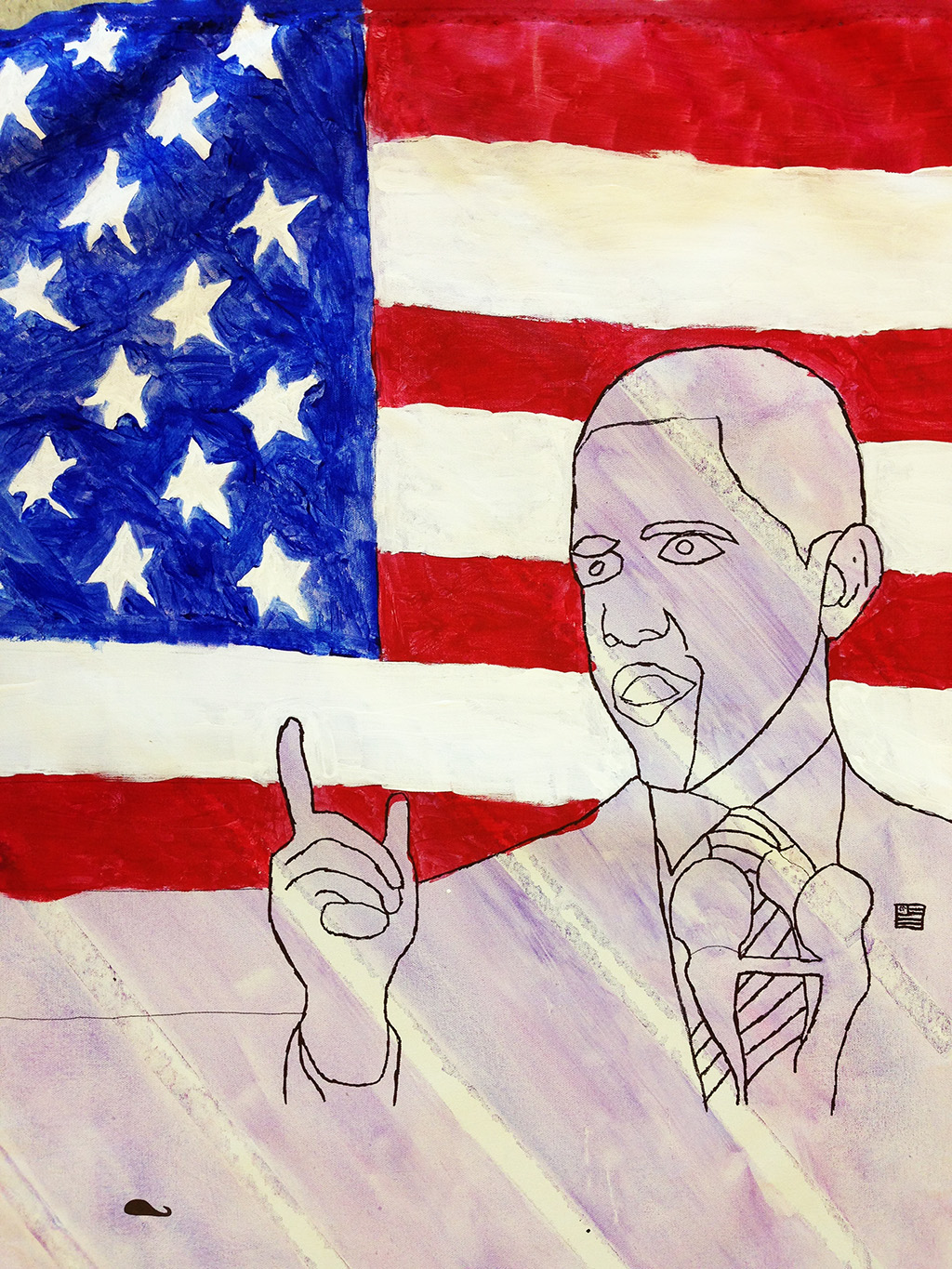
Goals + Objectives
Students are challenged to create a collaborative art installation that explores the contemporary human experience in their community through a collection of images, artifacts, and ephemera that represent contemporary lifestyles and values.
Guiding Questions
- What “stuff” (images, artifacts, ephemera) would best serve as evidence to future generations or other cultures about how we live today and what we value?
- What personal images, artifacts, or ephemera would you choose to tell the story of your life?
- What important events, moments, or discoveries have shaped our contemporary world and our community?
- Who are the important people that have shaped our contemporary world?
- What texts (thoughts, quotes, ideas) represent our cultural values?
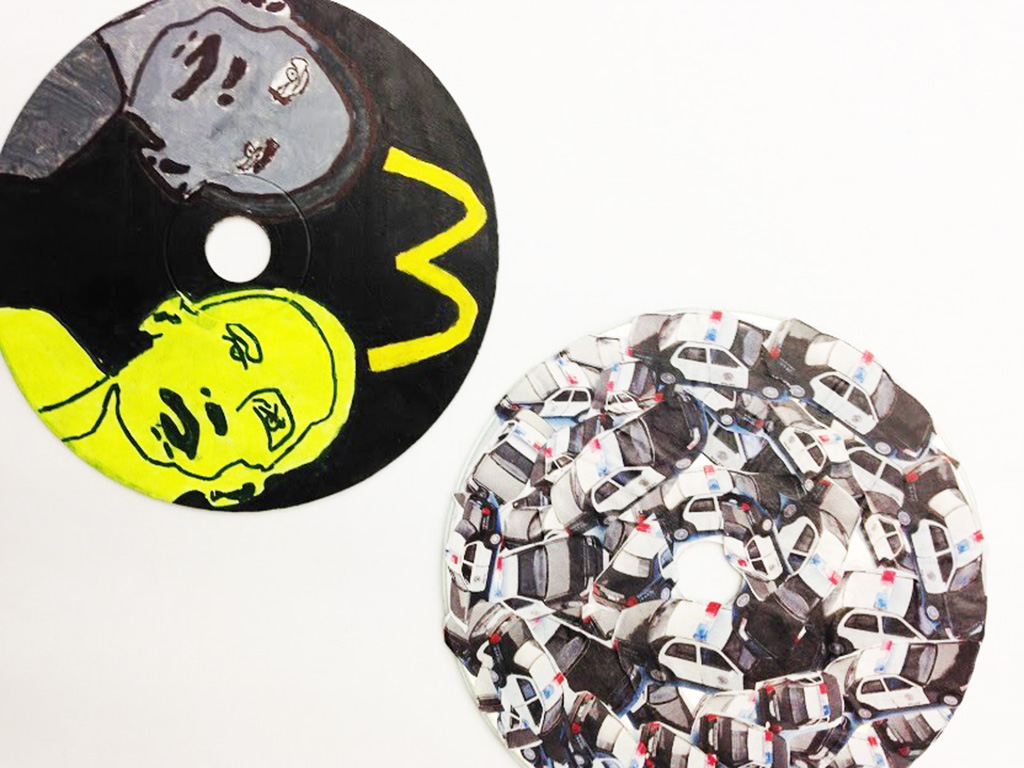
Documentation + Assessment
- Document process and installation on art department Instagram account.
- Documentation and assessment folder in Google Drive.
Timeframe + Learning Activities
Timeframe
This project takes 4-6 weeks to complete.
Research
- Students view and discuss the artifacts included on the Voyager Golden Record (1977). “Launched in 1977 by NASA, the Golden Record, a copper phonograph LP, was intended to provide a picture of life on planet Earth to any aliens who might encounter the spacecraft, using greetings, sounds, music, and images. In 2012, after traveling for 35 years, Voyager 1 left the solar system, becoming the first object made by humans to enter interstellar space” (see source).
- Students explore and discuss how artists collect, archive, and collage artifacts, using the Warhol time capsules and the video According to the Universe on artist Louise Despont as inspiration.
- Students listen to the NPR story about the Moon Ark Project: “An Artistic Time Capsule Prepares to Hitch a Ride to the Moon.”
- Students explore and discuss examples of installation art by multiple artists (see reference list).
Concept Development
Preparation: Students bring in 10 pieces of ephemera that represent their life as a teenager in the current year.
Evidence List: Full page brainstorm assignment in sketchbook or journal, in which students make a list of evidence consisting of objects and images that could inform future generations or other cultures about how we live today and what we value in our community.
Image Bank: Students generate an Image Bank by looking through magazines and newspapers and tearing out images representative of the following categories:
- What we eat
- What we do with our time
- How we live
- Celebrities/important people
- What we spend our money on
- What our world looks like
- Important issues/topics of today
Students view and discuss the work of contemporary painters who use popular culture imagery as source material for artworks that also serve as cultural critique.
- Andy Warhol and Jean-Michel Basquiat (corporate logos)
- Candida Alvarez (photos from newspapers and magazines)
- Suellen Rocca (1960s advertising images)
- Jim Shaw (politics, religion)
Production
- Students selected materials to be used for the installation. - Students made these choices based on the artists and projects we explored together, using the materials we have available at school. We discovered a box of old blank CDs, a partial roll of primed canvas, and rolls of monofilament. Students used the CDs as surfaces for paintings, collages, and written text. They decided to hang these using the monofilament.
- Students cut the canvas into large panels and they each created a painting with layers of images, based on their Evidence List and Image Bank, using projections to trace, transfer, or enlarge these found images. Each of these paintings has become part of one larger collaborative installation.
- Students collected disposable, non-valuable artifacts to display as “precious” objects within the installation, mounted on wood panels or placed inside glass jars.
- Students created large text banners on fabric in the style of Jenny Holzer, using quotes or statements that are representative of their community’s cultural values.
Connections
- Students discovered a papier-maché orb lantern that had been created by one of my former students many years ago. This piece was hung as a paper lantern with a battery operated tea light. Inspired by this piece, students decided to create similar orbs to illuminate the installation. Students filled these orbs with drawings or text on small pieces of paper.
- The school community has been invited to contribute their own drawings, text, and artifacts to the installation. We chose a heavily trafficked area in the school for the installation in order to invite all students who pass by to make a personal contribution to the collective installation.
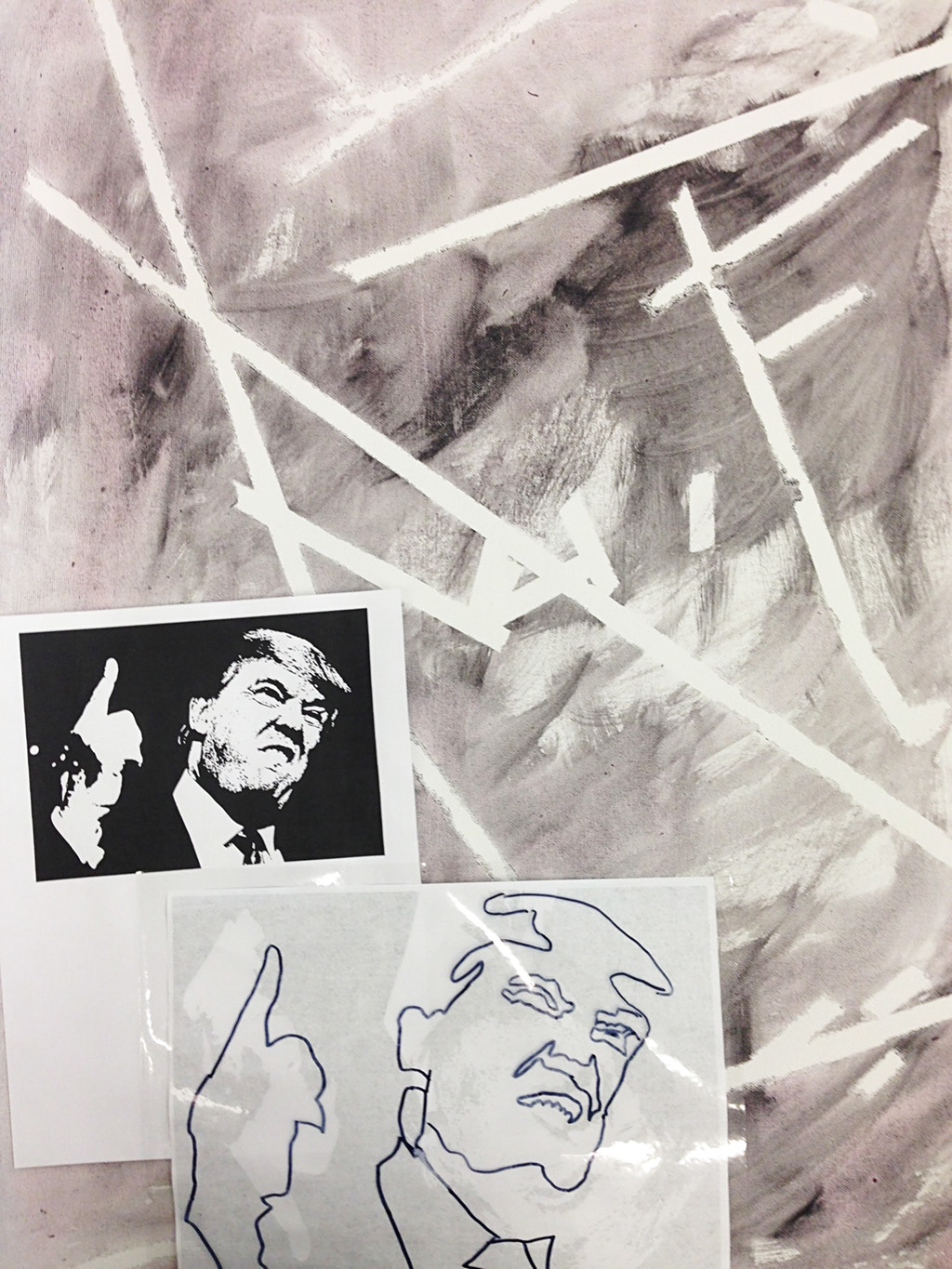
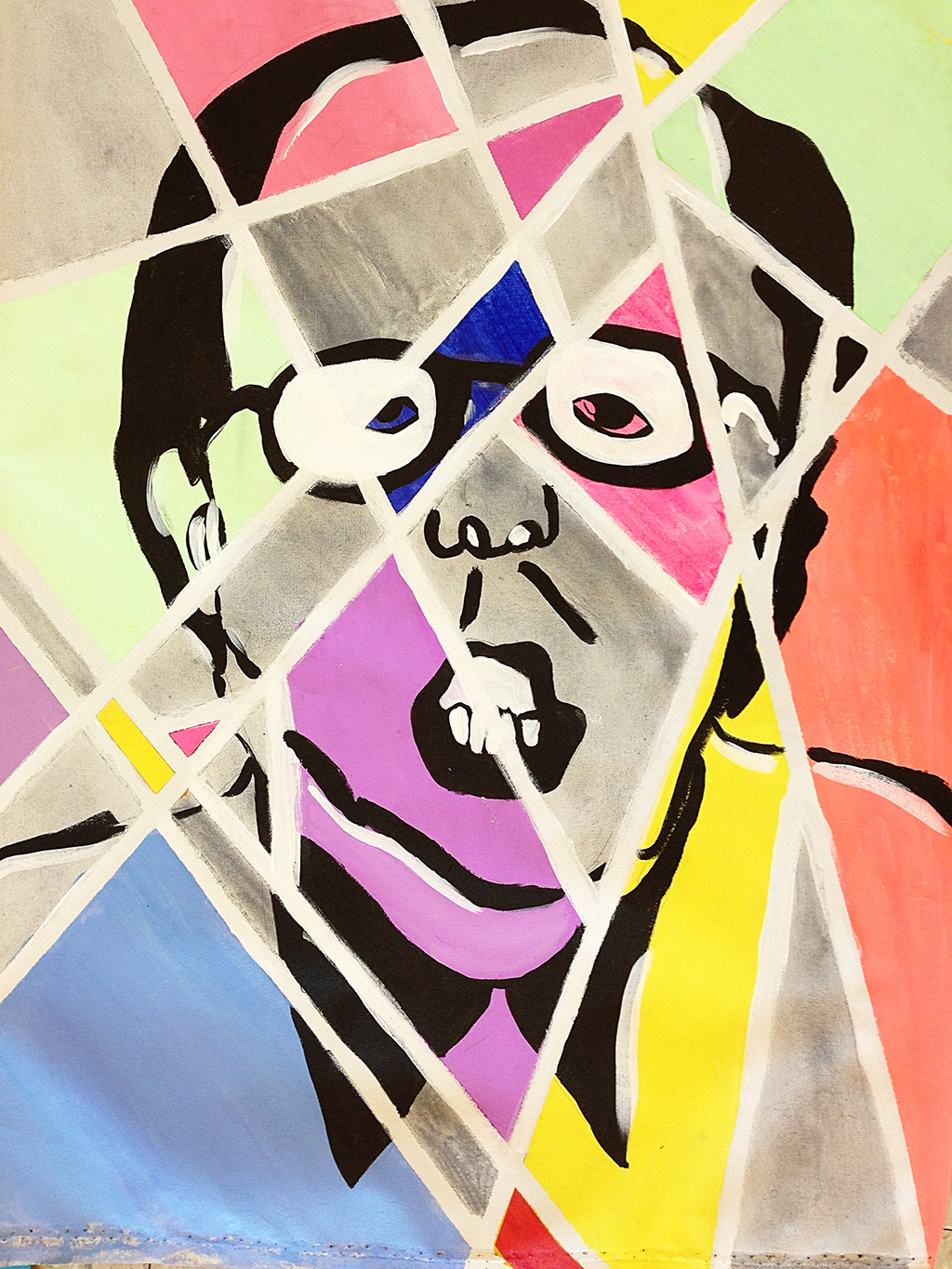
Materials
- Fabric
- Canvas
- Found objects as art-making surfaces (we used old blank CDs and small wooden tiles)
- Artifacts or ephemera
- Gesso
- Paint
- Papier-mache
- Monofilament or wire
- Battery operated tea lights
- Hot glue
MCA Connections
Students were inspired by their MCA field trip to the Freedom Principle exhibition. Students gained an understanding of how installation artworks could be used to engage audiences by inviting people to look closer at the artwork and occupy the installation space. They were specifically inspired by Nari Ward’s We the People and the AACM’s kinetic room installation, Rio Negro II. Students were also inspired by installation works in the MCA collection, including Christian Boltanski’s Monument: The Children of Dijon (1985). Students learned strategies for working together to develop a collective installation. They built a temporary space using large sticks and tape at the Taft Fall Open House, an activity inspired by the MCA Teacher Institute collaboration with artist Faheem Majeed.
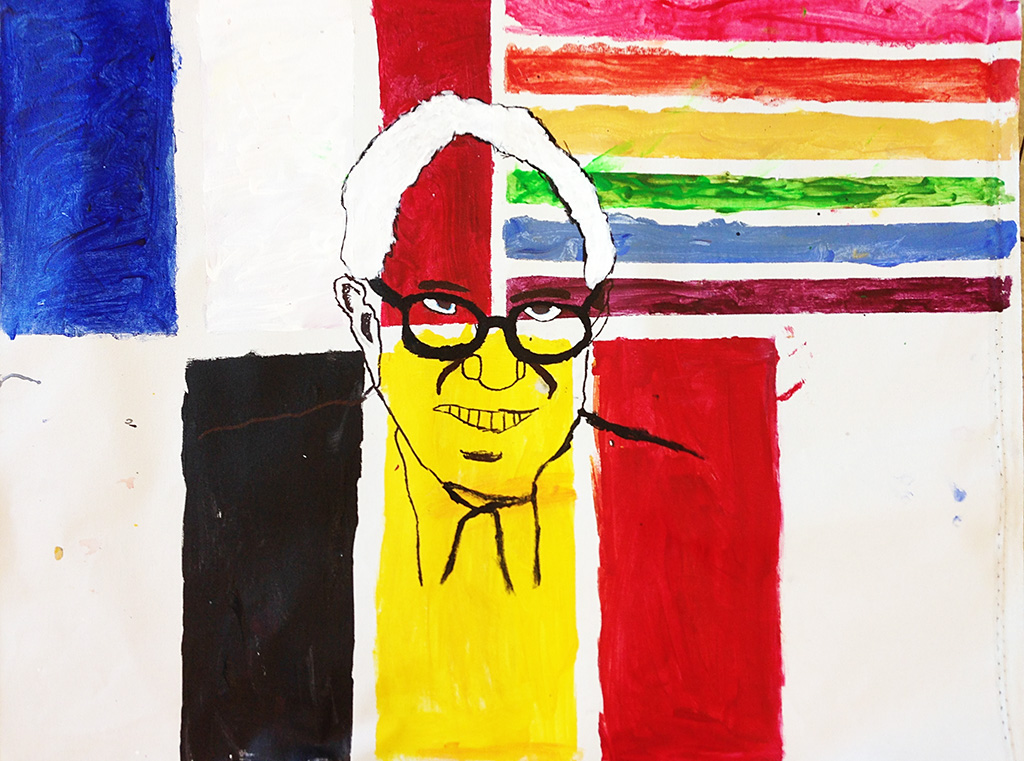
References + Resources
Artists & Projects
Rivane Neuenschwander — I Wish Your Wish
Nari Ward — We the People
Roman Ondak — Measuring the Universe
Tiffany Singh — Offerings; Bells
New American Public Art Group — String Fling
Christian Boltanski — Monument: The Children of Dijon
AACM (Association for the Advancement of Creative Musicians) — Rio Negro II
Rufat Abas — Time Capsule project
Jenny Holzer — Projections
Andy Warhol and Jean-Michel Basquiat — collaborative paintings
Candida Alvarez — paintings
Suellen Rocca — paintings
Jim Shaw — paintings
Other References
Bridget Doherty Trebing
Taft High School
Bridget Doherty Trebing is a proud CPS Visual Art educator. She has been teaching at Taft High School for 16 years, where she serves as department chair and is a member of the school's Instructional Leadership Team. Bridget has a master's degree in Art Education from Northern Illinois University and is National Board certified in Art. She has participated in numerous International Baccalaureate workshops and is teaching IB Middle Years Programme and Diploma Programme Visual Art courses.
Bridget is a member of the National Art Education Association and has presented at the National Convention. The MCA has been an invaluable resource throughout Bridget's teaching career. She is a member of the MCA's Teacher Advisory Committee and has previously worked with the MCA's Summer Teacher Institute as a participant and consultant. Bridget's students have worked with MCA artists-in-residence on collaborative projects that include screen printing and a photo mural. She is also the mother to a beautiful four-year-old, and the partner to her favorite poet and musician.
Bridget reflects on her process:
This collaborative public installation encourages our school community to consider what we value as a culture and invites the audience to participate in the project by contributing ideas through writing, artifacts, or images. Students selected their materials and developed their ideas based on the artists and projects that inspired them. Students worked together to curate and install the work. In reflection, I should have stuck to a shorter timeline for this project. The students’ enthusiasm waned as we spent a lot of time researching and brainstorming what images, artifacts, and ephemera would best represent how we live today and what we value. As I sensed their waning interest, I shifted us to other projects to give myself time to figure out how to refocus the project. I allowed my own self-doubt to derail us a bit and I have learned that I need to be more of a risk-taker and trust the process of creating socially engaged work. It’s okay to make “mistakes” and allow a degree of uncertainty during the process. This is an opportunity to learn alongside the students.